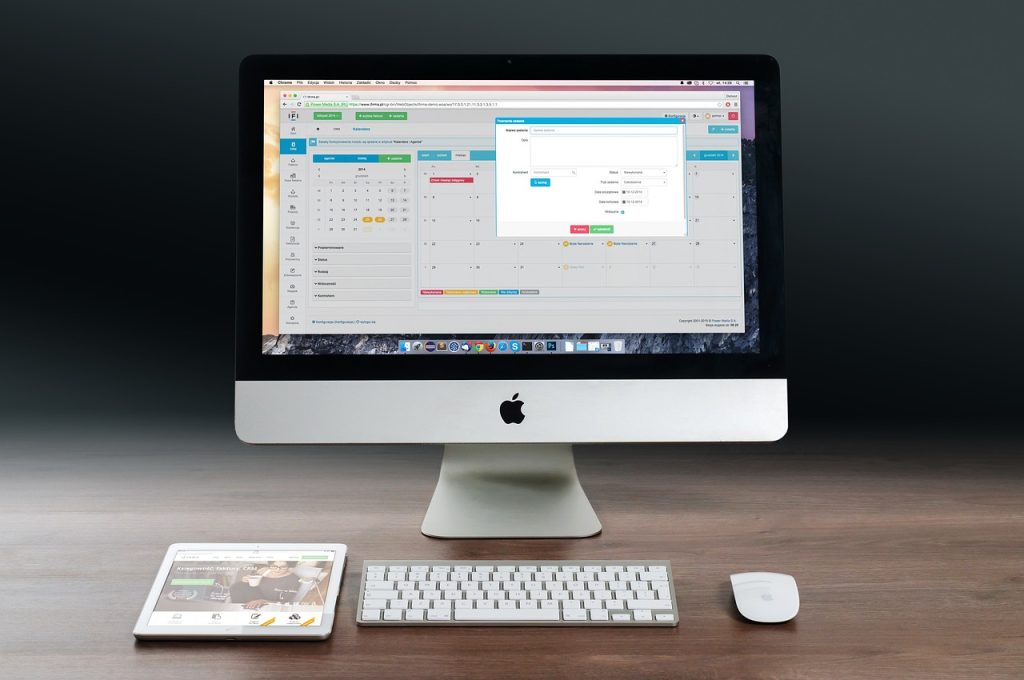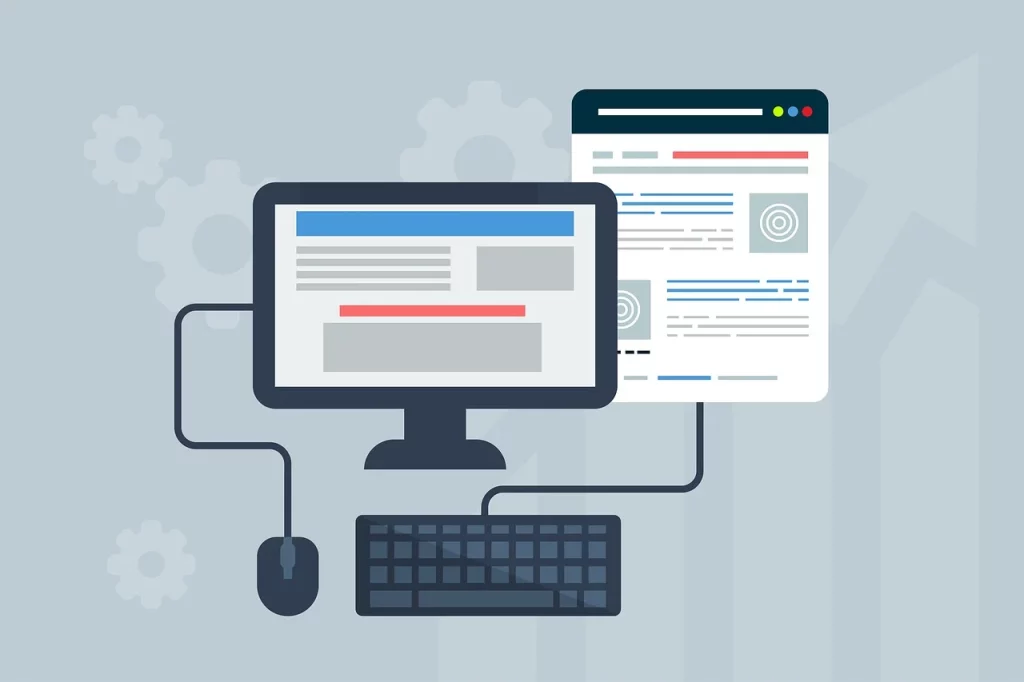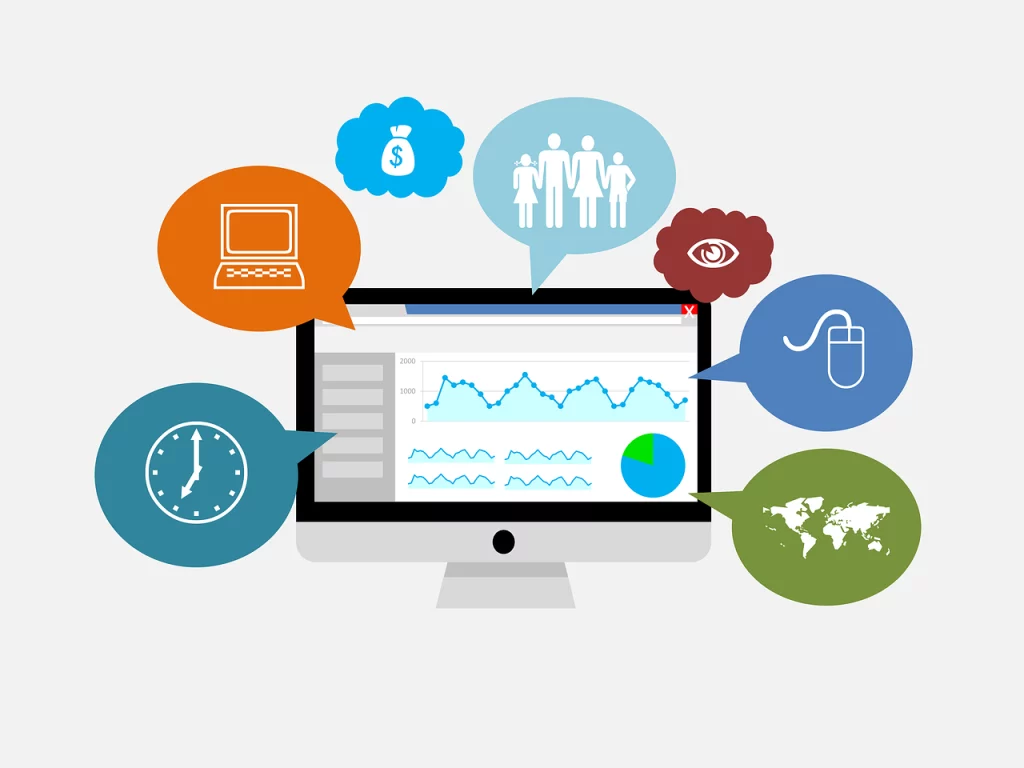
Crafted an awesome web page, but website visitors vanish without a second glance? You’re not alone. Don’t worry, optimizing landing pages is your secret weapon to getting people to click on your call to action button.
Conversion optimization means refining your landing page – the crucial post-ad touchpoint – to maximize conversions (sign-ups, purchases, etc.) And here’s a quick tip: landing page optimization doesn’t require a website overhaul. It’s about strategically tweaking the elements of the web page to turn visitors into happy paying customers.
Ready to ditch website limbo, increase conversions, and cultivate customer loyalty? Let’s unlock the power of landing pages!
Understanding Landing Page Optimization: Why It Matters and How to Avoid Common Pitfalls
Landing page optimization is about understanding your audience and crafting an experience that resonates deeply with them. The purpose of a landing page is to draw attention the attention of visitors. That might mean organic search traffic, social media traffic, or possibly even people coming from internal links on your web page.
That means that conversion rate optimization is about identifying what’s preventing visitors from taking the action you intend them to take after visiting your landing page. There are several possible reasons: confusing messages, slow loading times, a hidden call to action (CTA), or something else entirely.
Think of creating landing pages like this: your visitors’ behavior is like a roadmap, revealing valuable insights into how they interact with your content.
Tools like heatmaps and analytics software show you precisely where people click, scroll, and drop off. This data is crucial, allowing you to make informed decisions about your landing page performance and avoid optimization based on guesswork.

Before making any changes, it’s crucial to identify potential problems. Landing pages fail for several reasons, not just at the optimization level. Ask yourself:
Is the landing page message clear and concise with all the valuable information visitors need to make a decision, or is the layout confusing?
Do your CTAs communicate your intent clearly, and do they have internal links to convert visitors?
Does the page load quickly, or does it take too long, causing visitors to bounce?
Is the CTA prominent and easy to find, or is it hidden or poorly designed?
By proactively identifying potential issues, you can prioritize your optimization efforts and address the most critical roadblocks hindering conversions.
According to HubSpot, “To get the most results from your landing page, stick to one goal (or one CTA). Not only does this make it much easier to create an effective landing page, but it also reduces the amount of work your visitors have to do when they arrive on your page.”
Remember (and Learn From) Past Campaign Mistakes:
Every marketing campaign, regardless of its outcome, is a treasure trove of insights. Analyzing past campaigns is essential to refining your strategies and enhancing future performance. Here’s how you can learn from both your successes and failures:
1. Identify Weaknesses in Calls to Action (CTAs)
A weak CTA can be the downfall of even the most well-crafted campaign. Was the CTA clear, compelling, and easy to find? Did it create a sense of urgency or highlight the benefits of taking action? If not, consider how you can improve its design and messaging to drive better results.
2. Evaluate the User Experience (UX) of Forms
Lengthy or complicated forms can deter potential leads. Review the form completion rates and gather feedback to understand where users drop off.
Simplify the forms, reduce the number of required fields, and ensure they are mobile-friendly to increase completion rates.
3. Analyze Engagement Metrics
Look beyond just clicks and conversions. Examine engagement metrics such as time spent on the landing page, bounce rates, and heat maps.
These insights can reveal which parts of the page are capturing attention and which are being ignored, guiding you to make more impactful adjustments.
4. Understand Your Audience’s Behavior
Different audiences respond to different strategies. Segment your data to see how various demographics interacted with your campaign.
Tailor your future campaigns to better match the preferences and behaviors of your target audience.
5. Assess Content Effectiveness
Content is king, but not all content is created equal. Identify which pieces of content resonated with your audience and which did not.
Was the messaging clear and aligned with your brand? Did the visuals support the message or distract from it?
Use these findings to craft more compelling content in future campaigns.

6. Learn from Successful Elements
It’s not just about what went wrong. Pay attention to landing page optimization examples that worked well and why.
Was there a particular headline that captured attention, or a unique value proposition that drove conversions? Replicate these successful elements in your future campaigns to build on your successes.
7. Seek Feedback
Don’t shy away from seeking feedback from your audience and team members.
Surveys, interviews, and internal reviews can provide valuable perspectives that you might not have considered. This feedback can uncover hidden issues and opportunities for improvement.
8. Implement A/B Testing
A/B testing is a powerful tool for learning and optimizing. Test different versions of your landing pages, CTAs, and forms to see what performs best. Use these insights to continually refine your approach and increase your chances of success.
By meticulously analyzing past campaigns and learning from your mistakes, you can develop more effective strategies and create landing pages that truly convert. Remember, every setback is an opportunity to improve and grow.
Embrace the lessons learned and let them guide you toward greater success in your future marketing endeavors.
Building a Strong Foundation for Conversions
Relevance and targeting are the cornerstones of a successful landing page. Each ad or email campaign should lead users to the same landing page, specifically designed for that message. This consistency ensures visitors’ expectations are met, and conversions skyrocket.
Imagine an ad promising a free software trial.
The perfect landing page shouldn’t redirect to the homepage; it should explain the trial’s benefits and guide visitors toward signing up.

Building trust is equally important. Include good landing page elements like contact information, customer testimonials, and trust badges to establish your authenticity.
A phone number adds credibility and allows potential customers to connect directly. Similarly, showcasing certifications and brand logos reassure visitors of your legitimacy and industry recognition.
Finally, never underestimate the power of relevance. Matching your content to the visitor’s expectations (set by the ad or email) not only enhances their experience but also significantly boosts conversions. Whether it’s a newsletter signup, a whitepaper download, or a purchase, aligning your ad and landing page is key to landing page conversion rate turning website traffic into success.
Design and Crafting Better Landing Page Elements
With a solid foundation in place for optimizing landing pages, let’s now focus on how to seamlessly blend design and content to guide visitors toward conversion on your landing page.

Make Your Calls-to-Actions Clear and Unambiguous
Your call-to-action (CTA) is the heart of your landing page, prompting visitors to take the desired action. Clarity is paramount. Avoid using vague language or technical jargon. Instead, use simple, action-oriented verbs that clearly communicate the benefit of taking the next step. Examples include “Sign Up for Free,” “Download Now,” or “Get Started Today.”
The language you use in your CTAs should be straightforward and compelling. Instead of just saying “Submit,” tell visitors exactly what they will get or what will happen next. For example, “Download Your Free Guide” is much more informative and enticing than a generic “Submit.” This specificity can significantly improve your conversion rates as visitors immediately understand the value of clicking the button.
As Growth Operations Firm reminds us, “If you have an average amount of traffic (like, say, 1,000 visitors a month for a small business), that’s 100 new potential customers or clients.”
Keep Your Call-to-Action Buttons Straightforward
Landing page design matters, too. Your CTA buttons should stand out visually, using contrasting colors and sufficient whitespace to grab attention without overwhelming the page. Experiment with different button shapes and sizes to find what resonates best with your audience.
Consider using a single, dominant CTA button to avoid confusing visitors, while offering additional options within the form itself if necessary. Remember, placement is key. Position your CTA buttons strategically, typically above the fold and near the form to guide visitors toward conversion.
The visual design of your CTA button is as important as its text. Use colors that contrast sharply with the background to make the button pop. Additionally, make sure the button is large enough to be easily clickable on both desktop and mobile devices. Adding subtle animations or hover effects can also draw attention to the button, increasing the likelihood of clicks.
Make Form Labels and Field Text Easy to Read
Forms on your landing page can make or break your conversion rates. Ensure a smooth user experience by using clear and concise labels for each form field. Avoid technical terms and acronyms that your audience might not understand. Utilize helpful placeholder text within the fields to provide guidance and examples for what information is needed.
Remember, less is more. Only request essential information to avoid overwhelming visitors and increasing form abandonment rates. Every additional field in your form can create friction and potentially reduce the number of completions. Stick to the basics and ask for more detailed information only if absolutely necessary.
The layout of your form is also crucial. Use a single-column design to guide users through the form in a logical and straightforward manner. Group related fields together and use headings or borders to separate different sections, making the form easier to navigate.
Enhance User Trust and Reduce Friction
To further boost your landing page effectiveness, include trust signals near your form and CTA. These can be testimonials, security badges, or small snippets of positive reviews. They help reassure visitors that their information is safe and that others have benefited from taking the same action.
Additionally, ensure that your landing page loads quickly and is mobile-responsive. Slow load times or a poor mobile experience can drive potential conversions away. Use tools to test your page speed and make necessary optimizations.

Test and Optimize
Continuously test and optimize your landing page elements. A/B testing different CTA texts, button colors, and form field arrangements can provide valuable insights into what works best for your audience. Use analytics to track performance and make data-driven decisions for ongoing improvements.
By following these guidelines, you can create landing pages with clear, compelling calls-to-action, easy-to-read form labels, and a user-friendly design that encourages conversions.
Include Plenty of Whitespace in Your Layout
Whitespace, the empty space between design elements, plays a crucial role in creating a clean and user-friendly landing page. It improves readability by preventing visual clutter and allows landing page visitors to focus on the most important information, like your CTA and key benefits.
Using ample whitespace effectively separates content sections, making your page easier to navigate and visually appealing. It helps to create a balanced layout, giving each element room to breathe and ensuring that no single part of your page overwhelms the viewer. Whitespace can also draw attention to specific areas, such as highlighting your calls to action and emphasizing key benefits.
In addition, whitespace enhances the overall visual hierarchy of your landing page. By strategically placing whitespace around important elements, you guide the visitor’s eye through the page in a deliberate manner, making it more likely they will engage with your content and take the desired action.

Test the Primary Image(s) or Photography
Landing page visuals play a significant role in capturing visitor attention and conveying your message effectively. Invest in high-quality, authentic images or videos that resonate with your target audience and visually represent your brand identity. And remember — a picture is worth a thousand words, so be sure your landing page says exactly what you want it to say.
Avoid using generic stock photos that appear impersonal and unoriginal. Instead, opt for images that evoke emotions, showcase your product or service in action, or feature real people to build trust and connect with visitors on a deeper level. Authentic images can significantly increase engagement and conversions by making your landing page feel more relatable and trustworthy.
To ensure your images are effective, conduct A/B testing with different visuals to see which ones resonate best with your audience. Test various elements such as image type (photos vs. illustrations), subject matter (people vs. products), and placement on the page. This data-driven approach will help you choose the most impactful visuals for your landing page.
Don’t Use “Free” Photos You Found on the Internet:
Using low-quality or irrelevant images on your landing page can negatively impact your brand image and hinder conversions. Consider the message you want to convey and invest in professional photography or high-quality stock photos that align with your brand aesthetic and target audience. Remember, authenticity is key. Showcase your company culture, team, or customers through genuine photos to build trust and establish credibility with visitors.
Free photos found on the internet are often overused and can make your landing page look unoriginal and unprofessional. Instead, prioritize high-resolution images that reflect your brand’s unique identity and values. If budget is a concern, there are affordable stock photo options that offer a wide range of high-quality images.
According to Unbounce, “Most campaigns are intended for a specific segment or user demographic. As such, itʼs a good idea to try different images that provide varied emotional responses. The smiling happy old fly-fisherman may well evoke a happy retirement, but some people can be thrown off by generic stock imagery.”
Additionally, incorporating custom photography on dedicated landing pages can set your brand apart and provide a more personalized experience for your visitors. Images of your actual products, offices, or employees can create a stronger connection with your audience and enhance the overall credibility of your landing page.
Advanced Techniques for Landing Page Masters: Unveiling the Secrets to Conversion Success

Once you’ve mastered the fundamentals of landing page optimization tools it’s time to delve deeper and explore advanced techniques that can significantly boost your conversion rates. Let’s unlock the secrets used by landing page masters to turn website visitors into loyal customers.
10 Landing Page Optimization Best Practices to Skyrocket Conversions

1. Headline Hero
Craft a clear, benefit-driven headline that immediately grabs attention and communicates the value proposition of your offer. The first thing someone sees on your landing page should communicate your intent clearly and succinctly, and ideally convert visitors into paying customers.
A strong headline can make the difference between a visitor staying to learn more or leaving within seconds. It should be bold, concise, and directly address the problem your product or service solves.
For example, instead of saying “Welcome to Our Website,” opt for “Transform Your Home with Our Eco-Friendly Products.”
2. Visual Appeal
Choose high-quality images or videos that resonate with your target audience and visually represent your message. You’re aiming to be more than the average landing page, and that means avoiding difficult-to-read walls of text.
Instead, use visuals to break up content and keep the page engaging. Select images that are relevant to your product or service and reflect your brand’s identity. Videos can also be powerful tools for demonstrating your product in action or sharing customer testimonials.
Make sure all visuals are optimized for fast loading times to prevent frustrating delays.
3. Simplicity Reigns Supreme
Prioritize a clean and uncluttered design that’s easy to navigate and avoids overwhelming visitors. A simple, well-organized layout helps guide users toward the key information and actions you want them to take. Use plenty of whitespace to create a balanced, aesthetically pleasing page.
Avoid clutter by limiting the number of elements on each section of the page, and make sure each element serves a clear purpose.
Navigation should be intuitive, with a logical flow from one section to the next, ensuring that visitors can easily find what they’re looking for.

4. Compelling Copy
Write persuasive and concise copy that guides visitors toward the desired action, using clear calls to action (CTAs). This is critical to your landing page conversion rate.
Your copy should highlight the benefits of your offer and speak directly to the needs and desires of your target audience. Use strong, action-oriented language and keep paragraphs short to maintain readability.
Incorporate CTAs throughout the page, ensuring they stand out visually and clearly indicate what the visitor should do next, such as “Download Your Free eBook” or “Start Your Free Trial.”
5. Frictionless Forms
Remember: no one likes doing paperwork. In the same way, forms that aren’t easy to fill out are the opposite of conversion rate optimization.
Design user-friendly forms that are simple to complete and minimize the risk of abandonment. Limit the number of fields to only what is absolutely necessary, and consider using smart forms that adapt based on user input. Clearly label each field and provide examples where needed.
Ensure the form is mobile-friendly and test it on multiple devices to guarantee a seamless experience for all users.
6. Authenticity Matters
Utilize real photos and testimonials to build trust and establish credibility with your audience. Authentic visuals and genuine customer feedback can significantly enhance your landing page’s appeal.
Feature images of real people using your product or service, and include testimonials that speak to their positive experiences. This helps potential customers relate to your brand and feel more confident in making a purchase.
Additionally, consider adding a section that highlights your company’s story, values, and mission to create a deeper connection with your audience.

7. Social Proof Powerhouse
Showcase social proof elements like customer reviews and logos to demonstrate the value you deliver. Social proof is a powerful tool for building trust and credibility. Highlight positive reviews from satisfied customers, and display logos of well-known brands or media outlets that have featured your product.
You can also include statistics, such as the number of happy customers or successful projects, to further validate your credibility.
This reassures potential customers that others have had positive experiences with your brand, making them more likely to convert.
8. Data-Driven Decisions
Leverage analytics tools to track user behavior and gain actionable insights to inform your optimization strategy.
Understanding how visitors interact with your landing page is crucial for making data-driven decisions. Use tools like Google Analytics to monitor metrics such as bounce rate, average session duration, and conversion rate. Heatmaps can provide visual insights into where users are clicking and which parts of the page are receiving the most attention.
Analyzing this data helps you identify areas for improvement and refine your strategy to better meet the needs of your audience.
9. Mobile-First Mindset
Ensure your landing page is responsive and provides a seamless user experience across all devices, especially mobile.
With a significant portion of web traffic coming from mobile devices, it’s essential to prioritize mobile optimization. Design your page to be fully responsive, adapting to different screen sizes without compromising functionality or aesthetics. Test your landing page on various devices and browsers to ensure consistency and usability.
A mobile-friendly design not only enhances user experience but also improves your page’s ranking in search engine results.
10. SEO Optimization
Optimize your content for relevant keywords and technical SEO factors to improve search engine ranking and attract qualified organic traffic. A search engine optimized page draws in more visitors, which means more potential customers.
Conduct keyword research to identify terms your target audience is searching for and incorporate them naturally into your content. Optimize meta tags, headings, and image alt texts to enhance your page’s visibility.
Additionally, ensure your page loads quickly, has a clean URL structure, and is free of technical issues that could negatively impact its performance in search results.
5 Quick Tips for Immediate Landing Page Improvement

1. Refresh your headlines: Analyze current headlines in your landing page and consider A/B testing new variations that are more attention-grabbing and benefit-oriented.
2. Boost visual appeal: Replace low-quality images or videos with high-quality, professional assets that resonate with your target audience.
3. Simplify your forms: Review your landing page form and eliminate unnecessary fields to reduce friction and encourage completion.
4. Strengthen your CTA: Craft clear and compelling CTAs that tell visitors exactly what you want them to do and stand out visually on the page.
5. Leverage social proof: Add testimonials, case studies, or logos from reputable clients or partners in your landing page to build trust and showcase the value you provide.
Driving Organic Traffic Through Landing Page SEO

Landing page optimization performance for search engines can significantly increase visibility and attract qualified traffic. Here’s how:
Keyword Research: Conduct thorough keyword research to identify relevant keywords with high search volume and low competition.
Content Optimization: Optimize your landing page content with relevant keywords naturally integrated throughout the copy, including meta descriptions and title tags.
Internal Linking: Strategically link to your landing page from other relevant pages on your website to improve SEO value and user navigation.
Technical SEO: Ensure your landing page adheres to technical SEO best practices, including fast loading speed, mobile responsiveness, and a clean code structure.
Use Internal Linking on SEO Landing Pages

Internal linking offers a double benefit:
SEO Boost: Linking to your landing page from other relevant pages on your website distributes link equity, which can improve its search engine ranking.
Enhanced User Experience: Internal linking helps keep visitors engaged by guiding them to relevant content on your site, potentially increasing their time spent and overall brand interaction.
Pay Attention to Landing Page SEO

While general SEO principles apply, landing pages often have unique considerations:
Target Long-Tail Keywords: As landing pages are typically focused on specific offers, targeting long-tail keywords with lower competition can be more effective than broad keywords.
Prioritize User Intent: Optimize your landing page content to match the user’s search intent at the specific stage of the buyer’s journey they are in.
Track and Analyze SEO Performance: Monitor your landing page’s search engine ranking and performance metrics to identify areas for improvement and refine your SEO strategy.
Keeping Your Landing Page Technically Sound
Beyond design and content, landing page optimization requires attention to technical aspects that ensure smooth performance and a positive user experience.

Speed is king. In today’s digital world, users expect lightning-fast loading times. A few seconds of delay can significantly hurt the landing page’s conversion rate. Optimize landing pages images, leverage browser caching, and minimize heavy scripts to keep your page loading swiftly.
Responsiveness is essential. With more users accessing websites on mobile devices, your landing page design needs to adapt flawlessly across different screen sizes. A responsive design ensures all content is readable and all buttons are clickable, regardless of device, providing a seamless experience for everyone.
Essential Tools and Resources

Effective landing page optimization requires utilizing the right tools and resources. These can range from design and testing platforms to analytics and feedback systems, each offering unique benefits for refining your own landing page best practices
a. Design and Testing Tools
Platforms like Unbounce, Leadpages, and Instapage empower marketers to create, publish, and test landing pages without extensive technical expertise. They offer drag-and-drop interfaces, pre-designed templates, and A/B testing capabilities to experiment with different elements and find the winning formula.
b. Analytics Tools
Understanding how visitors interact with your landing page design is crucial. Google Analytics provides comprehensive data on visitor behavior, while heat mapping tools like Hotjar and Crazy Egg offer visual insights into user clicks, scrolls, and areas of engagement on your page.
c. Feedback Tools
Gathering direct user feedback can be incredibly valuable. Tools like Qualaroo and SurveyMonkey allow you to collect real-time feedback from visitors, providing actionable insights into what resonates and what needs improvement.
d. SEO and Performance Tools
To ensure your landing page is both visible and performing well, tools like Google’s Page Speed Insights and Moz’s SEO Toolbar are valuable allies. They analyze the loading speed and search engine optimization of your landing page, offering recommendations for improvement.
The Never-Ending Pursuit of Landing Page Perfection: Testing, Learning, and Refining

Landing page optimization is a continuous journey, not a one-time fix. The key lies in embracing a continuous improvement mindset, constantly seeking ways to elevate both the visitor experience and your conversion rates.
This involves actively listening to your visitors, gathering real-time feedback, and leveraging that data to guide your landing page optimization practices and efforts. Tools like surveys, user testing sessions, and analytics offer valuable insights into what resonates and what needs work.
Before launch, ensure a smooth takeoff with a pre-launch checklist.
This includes verifying landing page link and form functionality, guaranteeing fast loading across devices, and confirming the SEO-friendliness of the content. Additionally, evaluate the visual appeal and readability on both desktop and mobile to ensure a seamless user experience for all.
The optimization journey doesn’t end with your campaign.
Analyze post-campaign performance to identify areas for improvement. This could involve examining conversion rates, bounce rates, and user engagement metrics to pinpoint opportunities for further refinement.
Technical aspects play a vital role in landing page success.
Prioritize fast loading times, as even a single second of delay can negatively impact conversions. Optimizing landing page images, leveraging browser caching, and minimizing heavy scripts can keep visitors engaged and improve overall performance.
Embrace a mobile-friendly approach.
With the rise of mobile internet users, a responsive design that adapts seamlessly across different screen sizes is crucial for a positive user experience and improved SEO rankings.
Empower yourself with the right tools and resources.
Leverage analytics tools like Google Analytics to understand user behavior, and utilize A/B testing platforms like Optimizely or Unbounce to compare different landing page versions and identify the best performer. Additionally, consider SEO tools like SEMrush or Moz to refine keyword targeting and track search engine performance, ensuring your content reaches the right audience.
Conclusion: Optimize Your Landing Pages Today

An optimized landing page is an essential step to maximize the effectiveness of your inbound marketing efforts. By understanding the importance of design, content, and technical considerations of your landing page, and continuously testing and refining your approach, you can significantly enhance user experience and conversion rates.
Remember, landing page optimization is an ongoing process. With the right tools and a commitment to continuous improvement, your landing pages can become powerful assets in your marketing arsenal. Start optimizing them today and unlock the full potential of your inbound marketing campaigns.


